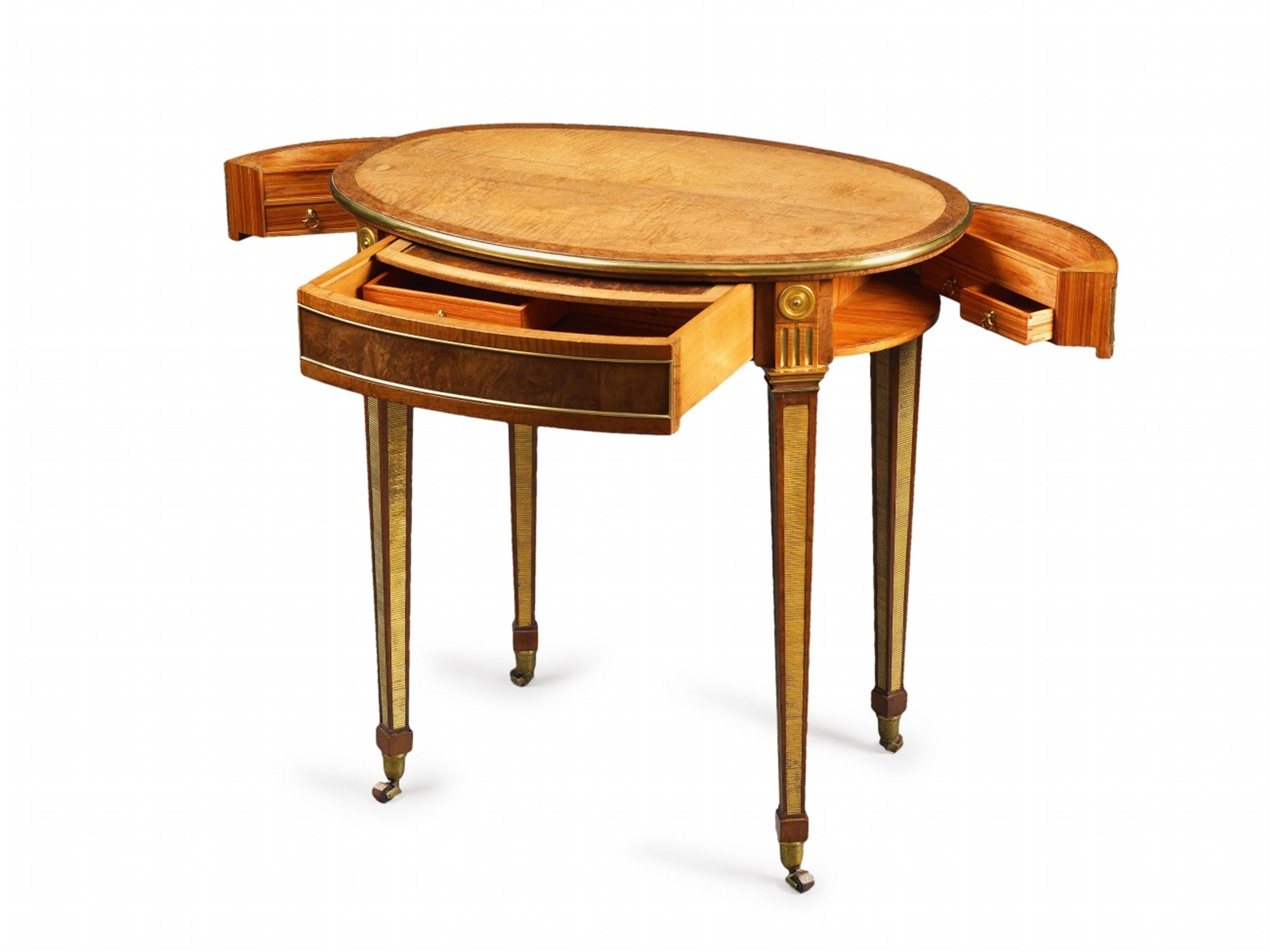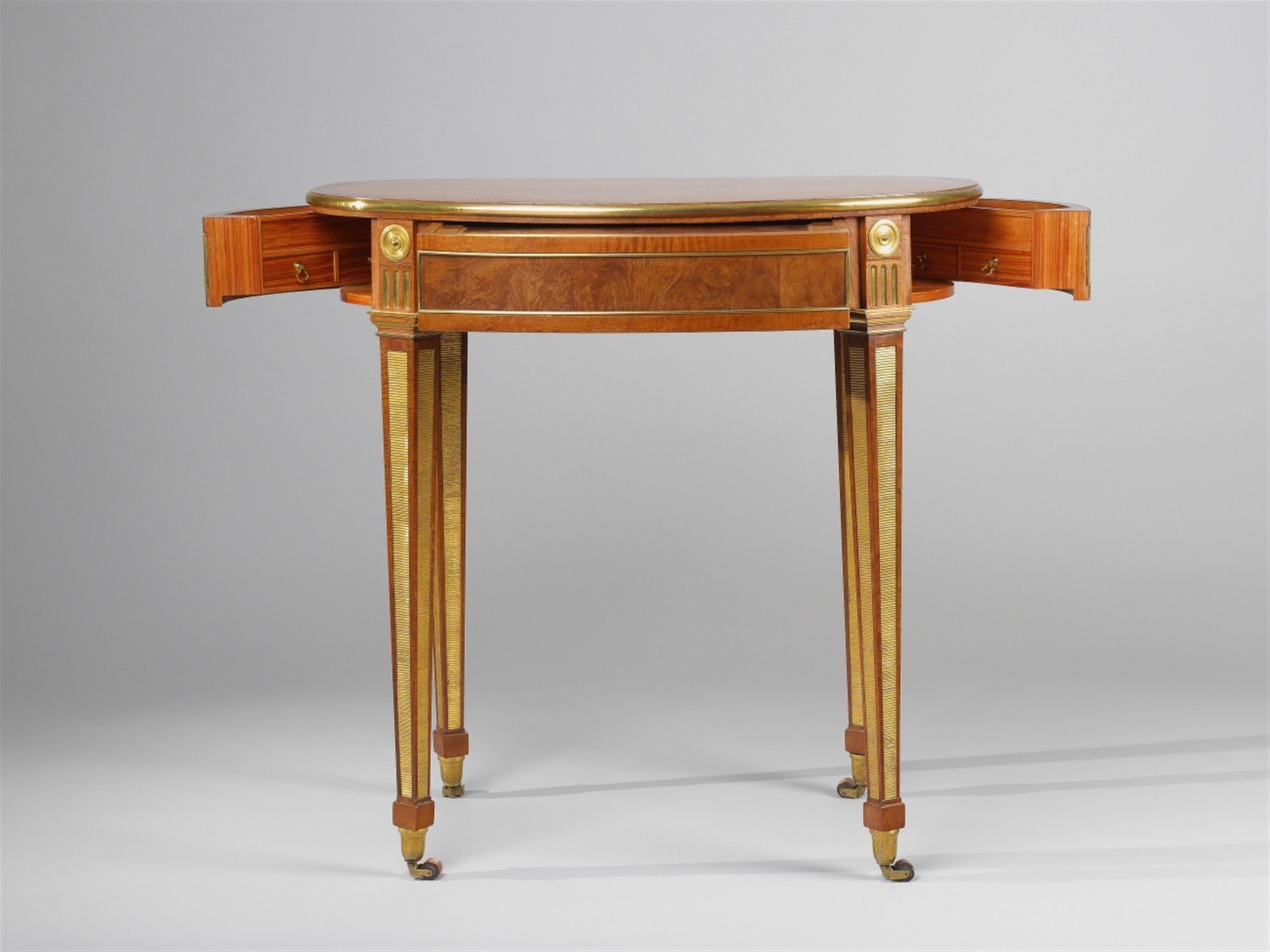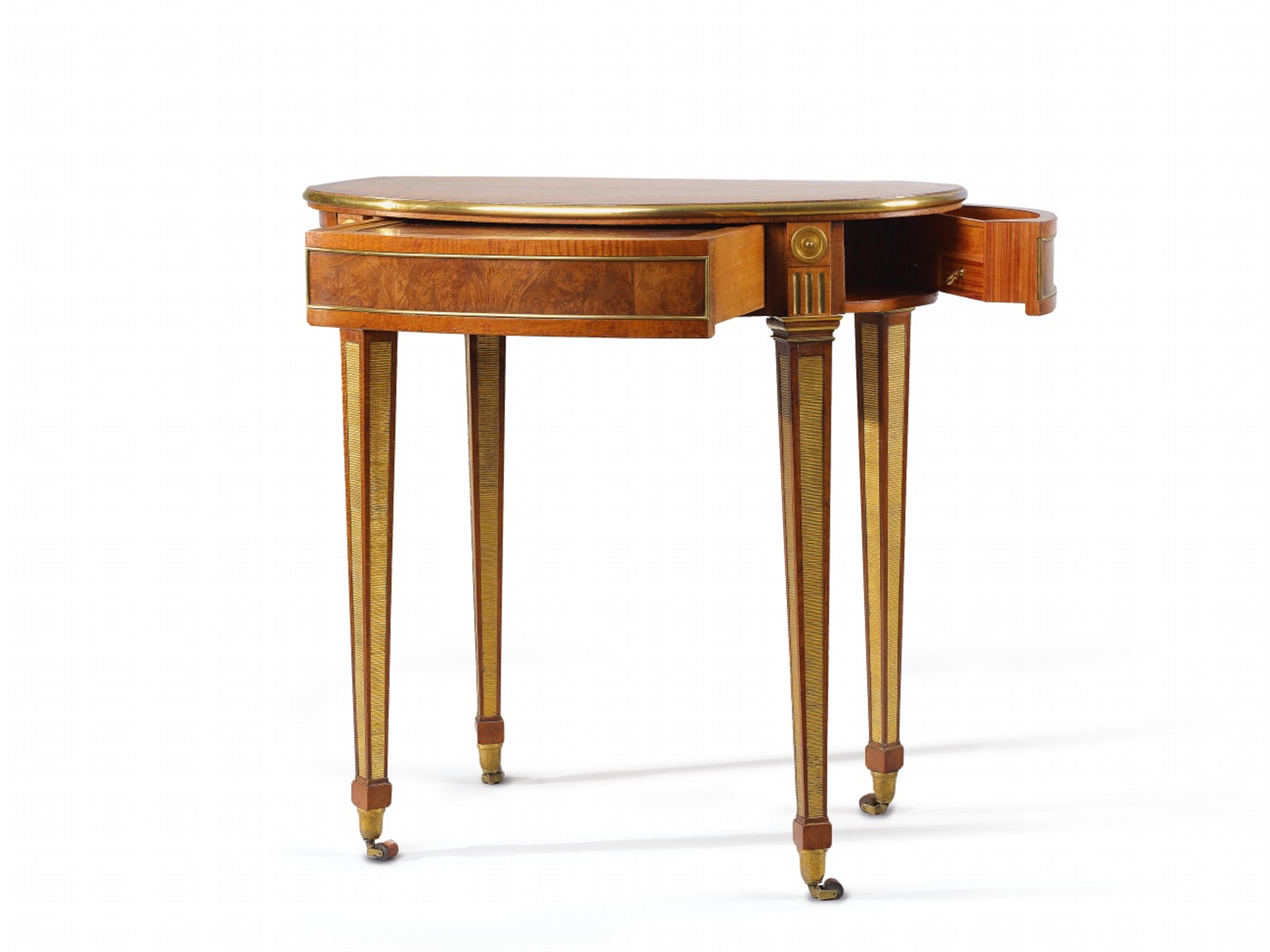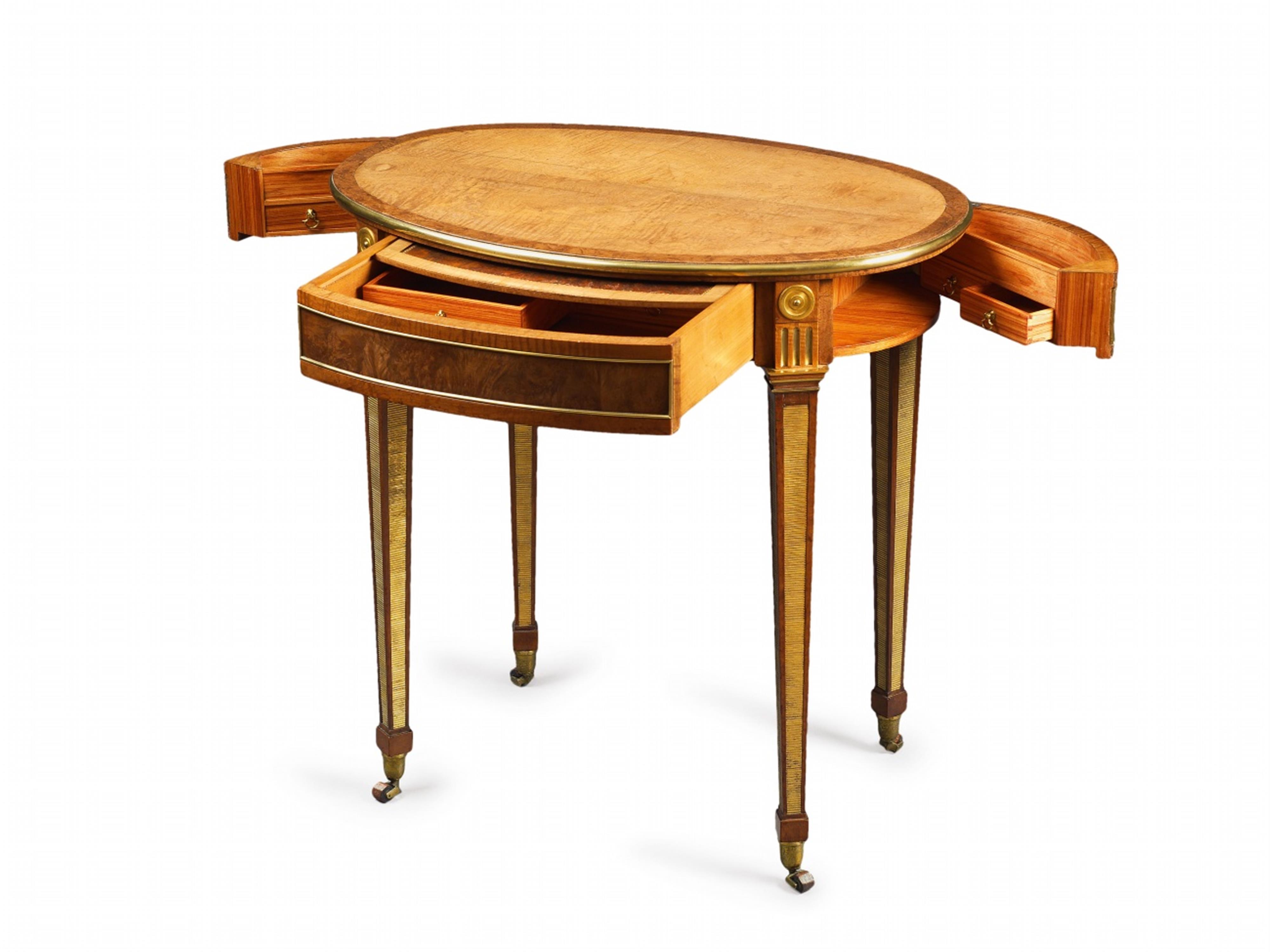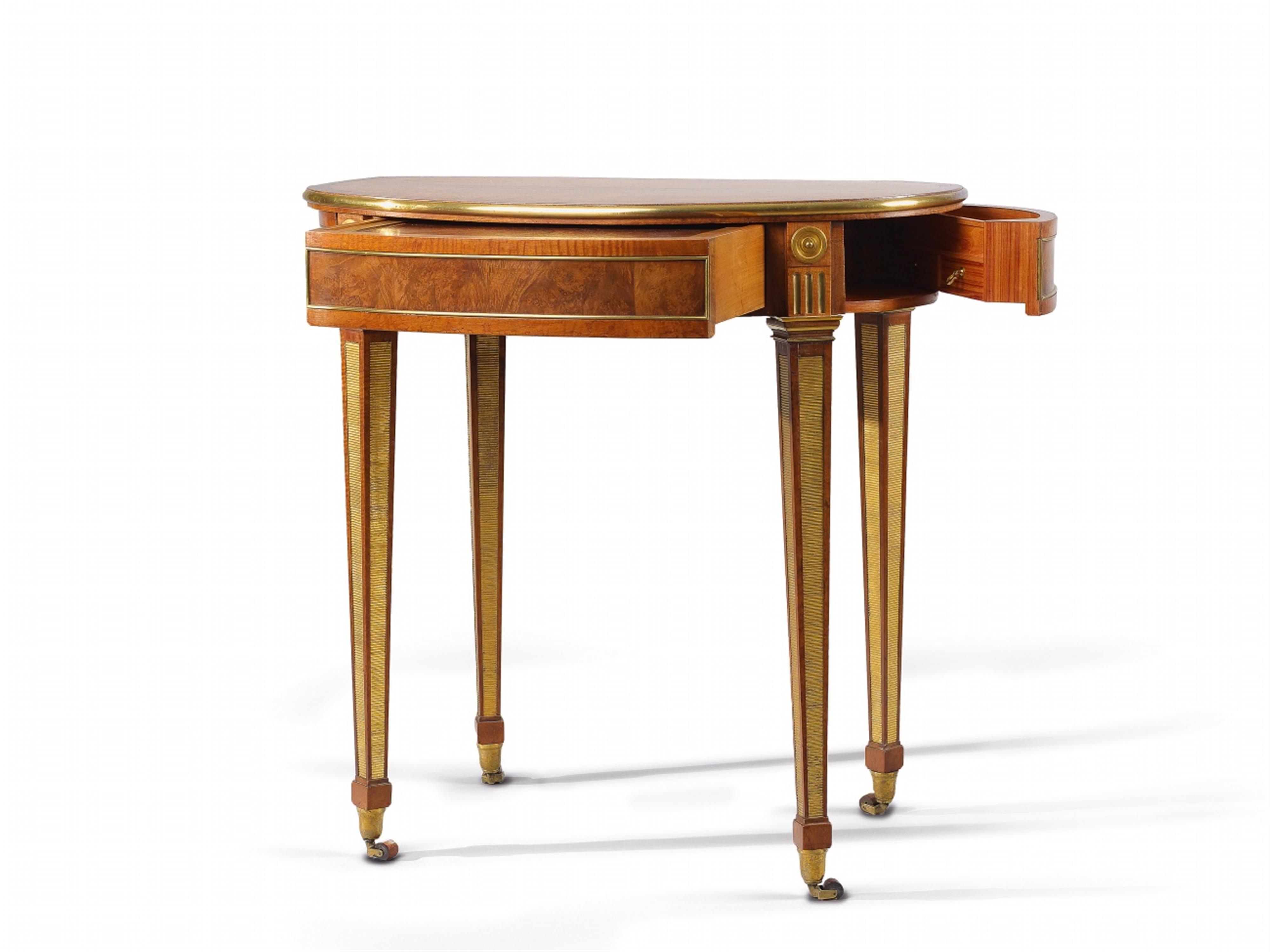An oval work table by David Roentgen
Banded and bird's eye maple on solid walnut, satinwood, rosewood, and mahogany corpus. Brown leather writing surface (replaced), ormolu mountings. Multi-functional table with four removable square-sectioned supports terminating in casters. The front with a wide push-to-open drawer containing a writing surface concealing two interior drawers and a spring mechanism to open the two side segments. The side segments each fitted with a compartment and two drawers. Old, filled cracks to the top, the spring mechanism in need of repair. H 72.5, W 73, D 51 cm.
Neuwied, 1780 - 1790.
This type of small oval table appears in David Roentgen's oeuvre in around 1770. One of the first known examples was a table made for Friedrich II which was formerly housed in the Neues Palais in Potsdam but is since listed as being lost in the war. The piece was of an elegant design with a waisted apron and s-shaped supports connected by a cruciform stretcher.
We know of several versions of the present design, which were produced in a greater or lesser degree of opulence according to the commission. Their aprons and tops tend to be decorated with rich inlaid designs of flowers or well-known chinoiserie motifs. None of the pieces yet featured appliqués of bronze or brass, but a gradual change in taste could be observed beginning in the year 1775. Forms became straighter, and aprons higher. Examples of such works can be found in the Rijksmuseum in Amsterdam, the Victoria & Albert Museum in London, and in the collection of the Metropolitan Museum in New York. Following these years, marquetries and inlays began to disappear, and more focus was placed upon the grain and pattern of the wood itself. Furniture designs were divided using gilt bronze or brass mouldings, and the length of the legs was accentuated by gilded milleraies fillings. The present work can be dated to exactly this phase.
Provenance
Private collection, Bretagne, France.
Daxer & Marschall, Munich.
Private collection, North Rhine-Westphalia.
Literature
Illustrated in Präzision und Hingabe, Möbelkunst Roentgen, Berlin 2007, p. 170.
Cf. Greber, Abraham und David Roentgen, Möbel für Europa, vol. 1, Starnberg 1980, p. 139ff and p. 230ff.
Cf. Greber, Abraham und David Roentgen, Möbel für Europa, vol. 2, Starnberg 1980, illus. 613ff.
Cf. Fabian, Roentgen Möbel aus Neuwied, Bad Neustadt 1986, illus. 80ff.
Cf. Fabian, Abraham und David Roentgen. Das noch aufgefundene Gesamtwerk ihrer Möbel- und Uhrenkunst in Verbindung mit der Uhrmacherfamilie Kinzing in Neuwied. Leben und Werk, Verzeichnis der Werke, Quellen, Bad Neustadt 1996, no. 84.
Cf. Koeppe, Extravagant Inventions, New York 2013, cat. no. 20-22 and 48.

